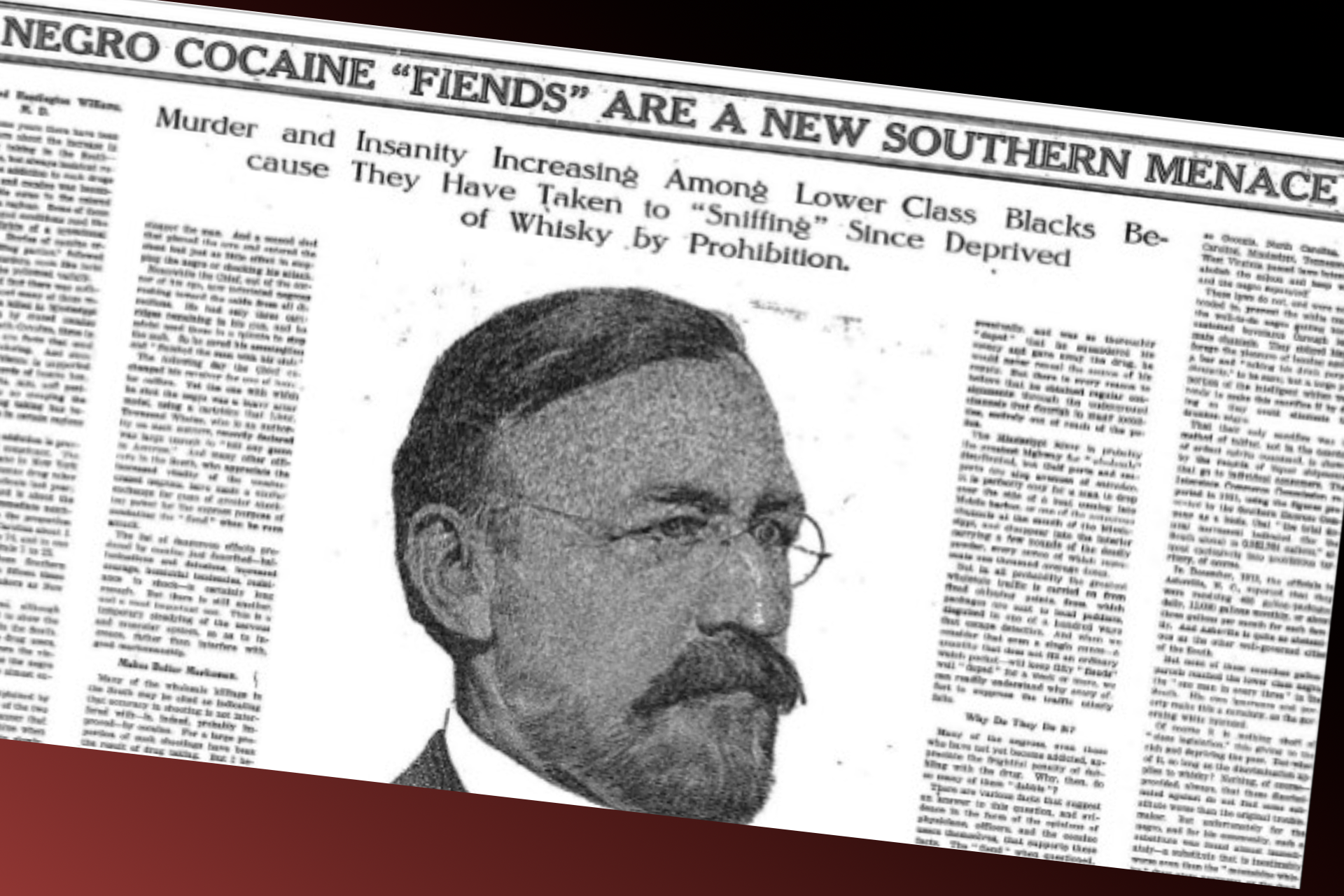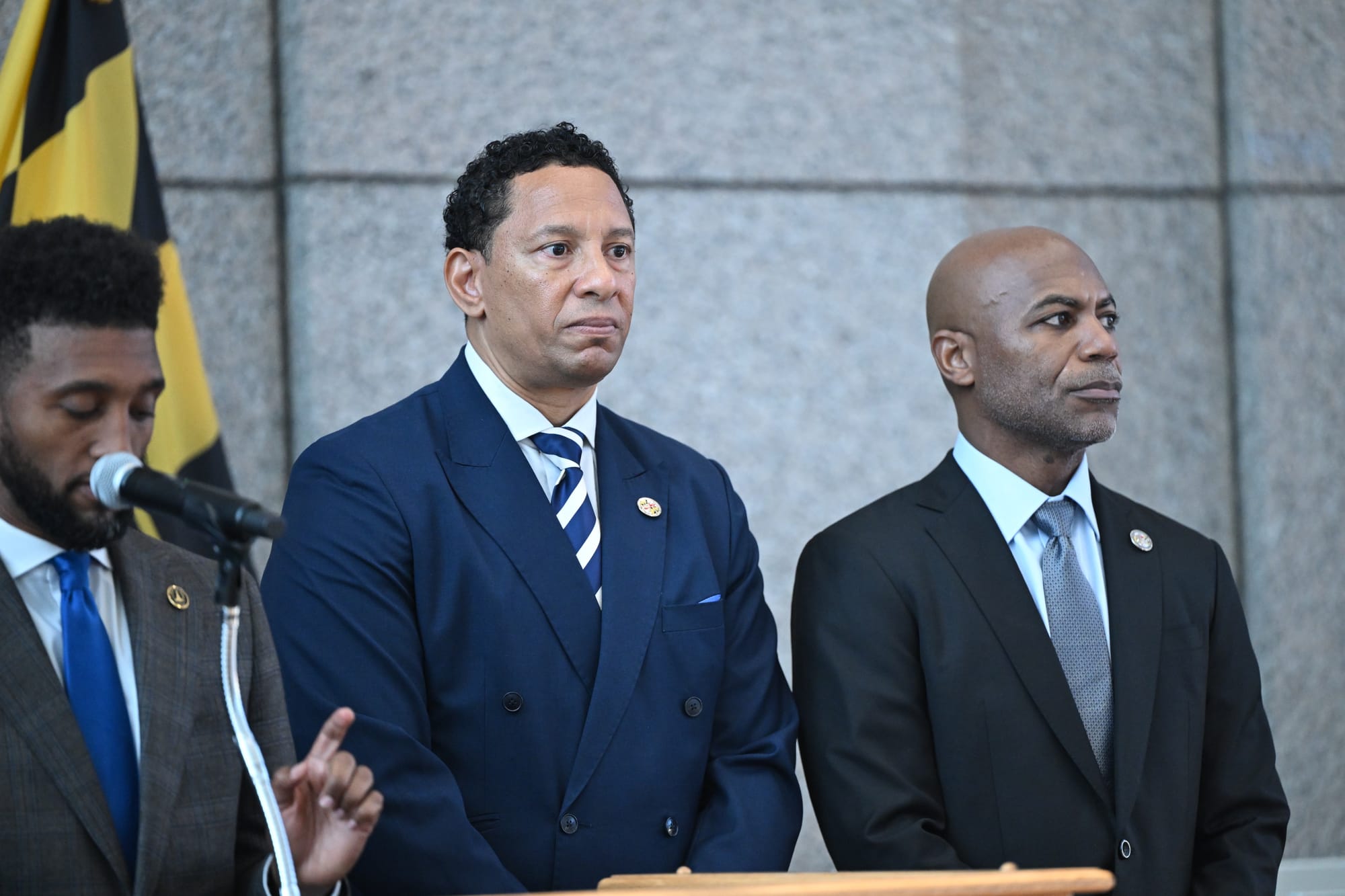
Despite growing objections from harm reduction workers in Baltimore, the city’s Board of Estimates on Wednesday approved Mayor Brandon Scott’s fiscal year 2026 budget that allocates tens of millions of opioid restitution dollars without the input of the newly appointed advisory board.
At Scott’s budget town hall at Coppin State University on May 6, about a dozen harm reduction workers from a variety of organizations questioned officials about his $4.7 billion budget proposal. The cadre of organizers expected significantly more grant opportunities for harm reduction organizations in the budget, and the Opioid Restitution Advisory Board’s seemingly small role in directing those funds raised flags as they demanded a swift and powerful response to the overdose crisis.
Scott described the issue as a “miscommunication” about how the restitution board functions after the Board of Estimates vote and said the issue was “resolved.” Those who work on the frontlines of the crisis, however, didn’t seem satisfied.
“What I’m hearing is that there will be a time and place for the board, and now is not that time — yet,” said Molly Greenberg, one of the organizers who works as harm reduction program manager at Health Care for the Homeless.
“I have the experience of getting to work with people [who use drugs] and talk with people, and when people are sharing their stories every day, you hear some things that are just unfathomable. It’s really hard to hear things like, ‘It’s going to be a multi-pronged process.’ I understand the need to do this carefully, especially with the history of corruption in Baltimore City, but people’s lives are at stake.”
The town hall came one week after the restitution board’s second meeting, where members were shocked to learn that they’d only have discretion over just $2 million of the funds that would be allocated to community organizations. The revelation raised questions about the role they can play in guiding how a windfall of opioid restitution funds are spent in a transparent manner.
At the meeting, the mayor’s administration broke the news via PowerPoint slides. While the mayor has the last say in how the funds will be used, the board has been hailed as part of a new chapter in combating the overdose crisis — one that is guided by those who have been personally impacted by addiction and drug use.
The board was created to oversee the city’s Opioid Restitution Fund, which holds money from opioid-related settlements and lawsuits. The money sits in a trust and accrues interest as it is distributed over 15 years.
Scott created the 20-person board through an executive order last year, and its members were sworn in earlier this year. The board is composed of city officials, public health workers and those with lived experience — all of whom were selected for their expertise and familiarity with the impact of the overdose crisis.
“This executive order will ensure that restitution funds are governed responsibly, transparently, and effectively in order to support our residents and communities most affected by the epidemic — not just during this administration, but for years to come," Scott said after signing the executive order creating the board last August.
Less than a year later, members of the board he created — and the organizations it may fund — say the rollout has been a confounding process that may not fund overdose response and prevention initiatives to their full potential.
The millions of dollars in predetermined community grants in the mayor’s budget are just a portion of the total $87 million dedicated by five settlement agreements reached last year. When factoring in $20 million Scott's administration gave to the health department, $107 million has been earmarked from the restitution fund without any input from the board.
“We know that the initial year is a little different because the judge said that things have to go to these places, and we wouldn’t have that money otherwise, so we’re not going to complain about that,” Scott said. “The whole point of this is to make sure we have it last for 15 years and that we have significant investment not only in the people, but the organizations that are doing the work that can help get us out of this.”
Harm reduction workers said they understood that the process of allocating restitution funds is new to the city, with this year marking the first that restitution funds would be included in the budget.
In response, the mayor and his administration have said that the board would have more influence over allocating funds in future budgets, which would include requests for proposals submitted by organizations.
Yet waiting another year for a more transparent process is inadequate, given the need for immediate action as drug users in Baltimore continue to die at astronomically high rates, organizers said.
“Every hour, every minute, every second that organizations aren’t properly funded, people die,” said Dave Fell, an outreach manager at the Behavioral Health Leadership Institute. “The quicker that we can strategically get together and say, ‘What really needs to be funded now to save the most lives today,’ the better. That’s clearly what we’re going to have to do.”
Candy Kerr, spokesperson and policy advocate for the Baltimore Harm Reduction Coalition, said the situation was frustrating, especially considering harm reduction organizations such as the BHRC were under the impression the funds could usher in a new chapter in the city’s response to the crisis.
The overdose crisis demands a radical response, such as overdose prevention centers, she said, yet the city’s overdose prevention strategy seems to continue to rely on piecemeal efforts that have proven insufficient.
“Everything takes a really long time, and everything needs to go through so many different layers of red tape,” Kerr said. “It’s never going to be fast enough unless they just give people money.”
“I think I would be much happier with the lack of transparency if radical actions were being taken. It would be a different conversation.”
Under the budget proposal, nearly $20 million would head directly to community organizations that provide harm reduction and addiction treatment services. The vast majority of that grant money would be for 22 organizations named in settlements reached with opioid manufacturers and distributors last year, leaving the board with only a small fraction of that to consider.
The remainder of the nearly $37 million in restitution funds would be allocated to city agencies — again without the input of board members.
“They got earmarked funding; it is theirs, and we have to give it to them or we give it back to the company,” said Sara Whaley, the city’s executive director of overdose response. “But we are not just writing them a check. There has been extensive technical assistance working with them about what they want to do, and how that aligns with what we see the need [to be].”
Yet that still didn’t seem to jive with organizers at the town hall.
Katie Rodriguez, founder of Grey Matters, which provides mental health and harm reduction services, said funding should be strategically allocated to organizations that put harm reduction supplies into the hands of drug users themselves.
“Ultimately, people who use drugs are the ones who are most likely to reverse overdoses,” Rodriguez said. “Yes, firefighters are showing up to the scene, but if you’re looking at the real overdose numbers and talking to the people out there, it’s people keeping each other alive all the time who are not paid for that at all.”
Despite these concerns, the Board of Estimates approved the budget Wednesday without discussing restitution funds, sending it to the Baltimore City Council, indicating the city plans to move forward, setting in stone a fiscal plan that not only has prompted backlash from harm reduction advocates but also the board that oversees them.
“I have to voice my deep, deep concerns about that,” said board member Meredith Kerr (no relation to Candy Kerr), who provides harm reduction services at the Behavioral Health Leadership Institute and SPARC Women’s Center, at the board’s meeting last week.
Other board members added to the list of concerns, questioning the use of restitution funds to replace existing funding streams in a controversial practice known as supplantation.
In March, amid news that President Donald Trump planned to slash billions of dollars in public health spending and freeze funds that could benefit harm reduction organizations, both city officials and board members expressed fears that the money would be used to “hold the dam” rather than augment harm reduction efforts.
Exactly one week later, Scott unveiled his proposed budget — and it did just that.
The budget calls for $3.3 million for the city's syringe service program, 911 nurse triage program, and population health program to be taken from the restitution fund rather than the city's general fund, officials have said.
“I would refer to our city council colleagues to ensure that when these budget discussions are happening, and you’re looking at these budgets, that this money — someone at the Tuerk Conference called it ‘blood money’ for people who died for this thing — is not going to something that has already been funded, and we’ve just decided we’ll use this money for that," said board member Carlos Hardy, who spent more than 30 years offering substance use disorder treatment in Baltimore.
Overall, the city is slated to receive nearly $670 million from five settlements and a jury verdict late last year in the first phase of an ongoing case against distributors McKesson and Cencora, formerly AmerisourceBergen. About $206 million has already been received, officials have said.
Baltimore City Circuit Court Judge Lawrence P. Fletcher-Hill will soon rule on whether the two companies must pay Baltimore $5.2 billion to fund the city’s abatement plan. The judge initially said he would rule by Wednesday, though he recently altered the deadline to June 6, according to court records.
The decision will come as funding for public health is at risk in Baltimore.
President Donald Trump is attempting to slash billions in federal spending for local health departments and public health initiatives as part of a barrage of cost-cutting measures. In addition, his administration has attempted to freeze federal grants, some of which benefit local harm reduction organizations.
Scott’s proposed budget already includes $23 million in cuts to the health department’s budget, seemingly negating the $20 million infusion in restitution funds and marking a more than 11% decrease from the year prior. Officials attributed this to declining state and federal aid.
On the other hand, the proposed budget would allocate $9.8 million to overdose response and prevention services, an 87% increase over the year prior — yet that number could change depending on what happens at the federal level.
“If we experience the kind of massive cuts that Trump is threatening to make, we will have even more difficult conversations to have,” Scott said at the May 6 town hall. “It is my job as the mayor and leader of the city to tell you that honestly.”
The City Council is expected to introduce the mayor’s budget on Monday. Residents will have another chance to express concerns at its annual Taxpayers’ Night event on Thursday at 5 p.m. at City Hall.
Council members have until June 26 to adopt a budget for the upcoming fiscal year, which begins on July 1.








Comments